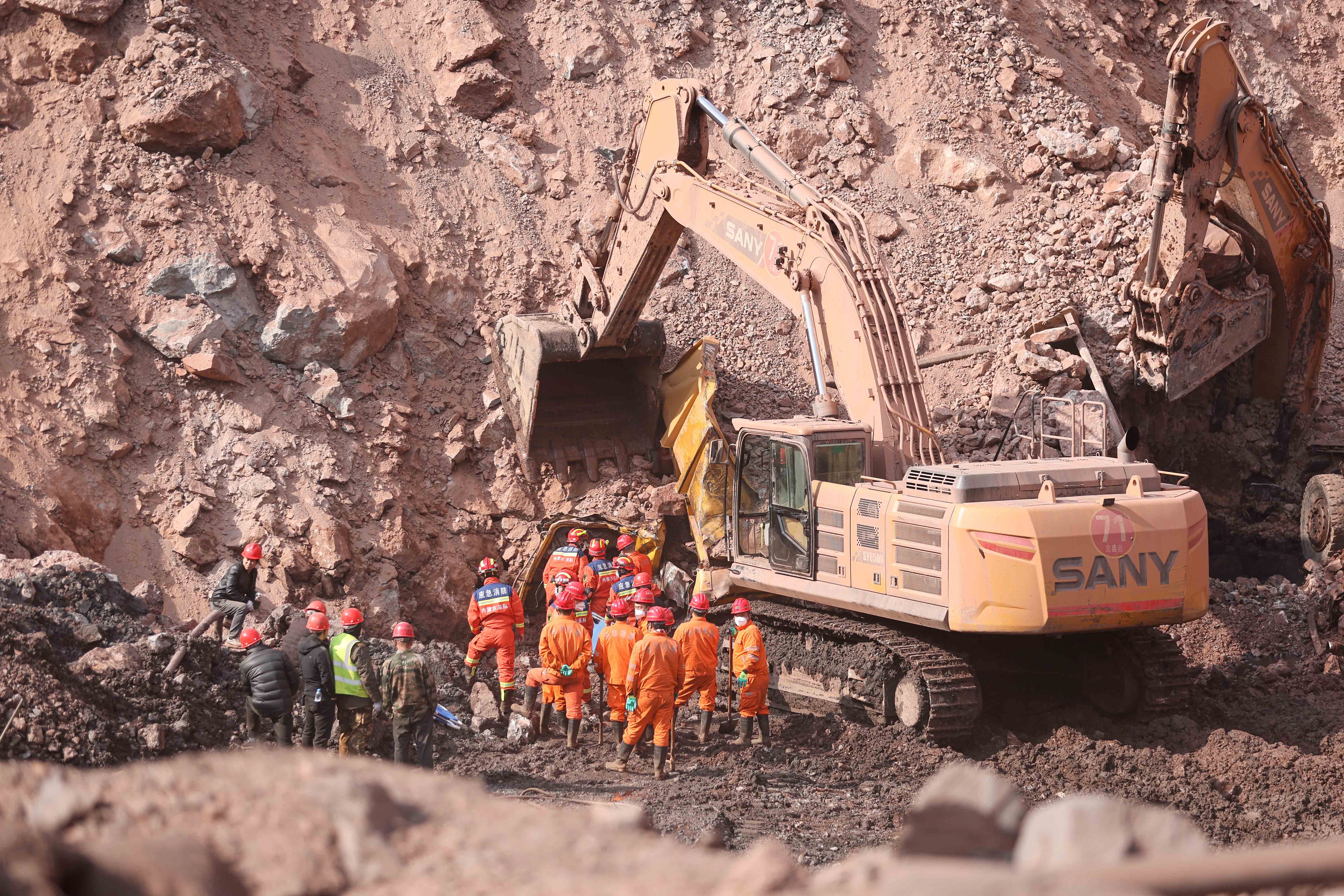China conducts nationwide inspections amid second mine disaster in space of a week
China, the world’s biggest coal producer, also relies heavily on coal as its major source of energy

Your support helps us to tell the story
From reproductive rights to climate change to Big Tech, The Independent is on the ground when the story is developing. Whether it's investigating the financials of Elon Musk's pro-Trump PAC or producing our latest documentary, 'The A Word', which shines a light on the American women fighting for reproductive rights, we know how important it is to parse out the facts from the messaging.
At such a critical moment in US history, we need reporters on the ground. Your donation allows us to keep sending journalists to speak to both sides of the story.
The Independent is trusted by Americans across the entire political spectrum. And unlike many other quality news outlets, we choose not to lock Americans out of our reporting and analysis with paywalls. We believe quality journalism should be available to everyone, paid for by those who can afford it.
Your support makes all the difference.At least five people were killed after a roof of a mine collapsed in southwestern China on Sunday, just days after a coal mine caved in and led to a continuing nationwide safety check.
Twenty-five miners were working underground in a mine in the Sichuan province when a part of the roof collapsed on them. Five were killed and three were injured, while the others escaped, according to China’s department of emergency management.
Authorities said it was not a coal mine, without providing further details.
Rescue efforts meanwhile continued at another open-pit coal mine in the northern part of the country, where over 40 people are still trapped under debris.
At least six people died from the incident last week in the Xinjing Coal Mining-operated site at Alxa League in the Inner Mongolia region.
Hundreds of fire rescue personnel, fire engines and heavy machinery have been pressed into action to continue the search for the trapped miners even as the hope of them being alive fades.
The cause for the collapse of the mine wall six days ago is under investigation and an unknown number of people have been detained.
President Xi Jinping has called for an “all-out” rescue operation, while local authorities have ordered inspections and safety improvements at other mines in the Inner Mongolia region, which is home to coal mines and other rare earth materials.
The Chinese ministry of emergency management has dispatched 20 teams across the country to conduct inspections to prevent further accidents.
“It is necessary to strictly control the safety of mines, immediately carry out special rectification of major safety hazards in mines, and deal with major risks and hidden dangers,” the ministry said in a statement on Friday.
Officials have been tasked with cracking down on poor management practices and illegal mining.
China, the world’s biggest coal producer, also relies heavily on coal as its major source of energy, but the mines are among the world’s deadliest due to the lack of safety measures despite government orders.
Past inspections have disrupted operations and affected supply as the new round of checks come at a time when Beijing’s economy has started its recovery journey post Covid restriction.
According to the National Mine Safety Administration (NMSA), the number of accidents at coal mines nearly doubled in 2022 compared to the previous year, as the death toll rose to a six-year high of 245.
China increased its coal output last year by nine per cent to a record 4.5 billion tonnes, with Beijing urging miners to boost production following a nationwide shortage.
The Asian giant suffered a wave of blackouts in September 2021 because of coal supply shortages, that resulted in cutting off thousands of homes and factories.
About 168 accidents of varying degrees of severity took place in coal mines in 2022, a drastic uptick from 91 the year before, according to NMSA data.
“They ignored safety requirements and rushed to meet the production targets... and even violated operations regulations to run over their designed capacity,” the regulator said.
China approved the upgradation of power capacities across 82 plants in 2022, taking the total increase in capacity to 106 gigawatts or the equivalent of two large coal plants each week, according to a report by the Center for Research on Energy and Clean Air.
The amount of capacity permitted more than quadrupled from 23 gigawatts in 2021, the report found.
Join our commenting forum
Join thought-provoking conversations, follow other Independent readers and see their replies
Comments